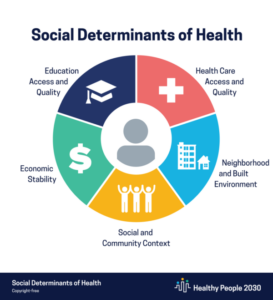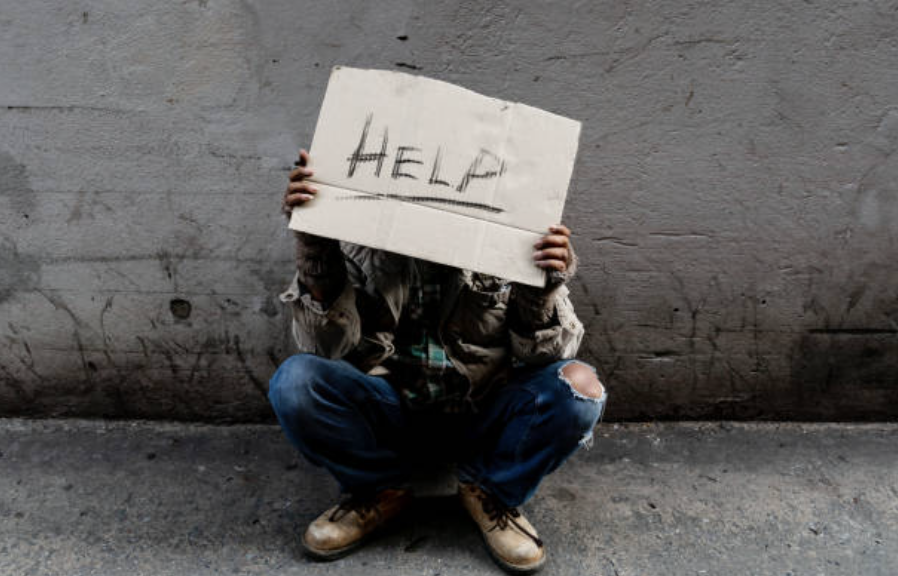This post was contributed by Jiamie Pyles.
Social and Structural Determinants of Health
In 2010 the World Health Organization (WHO) published the Conceptual Framework on the Social Determinants of Health. In this publication, WHO established the importance of examining a person’s well-being through a multifaceted and holistic lens, which includes examining the physical space they live in, or lack thereof. In the 14 years since this conceptual framework was published, health providers around the world have integrated the social determinants of health into their practices to better serve their patients.
Currently, the US Department of Health and Human Services recognizes the following five determinants as being instrumental to overall well-being.
- Economic stability
- Education access and quality
- Healthcare access and quality
- Social and Community Context
- Neighborhood and built environment
Housing is Healthcare
For the general population, the concept of housing as healthcare is a fairly new concept, but for health professionals, it has been an established healthcare metric for over a decade. The health of a person’s home is surmised by the quality of the materials that make up the home, the stability of the structure, the proximity of the home to polluters, the safety of the neighborhood the home is in, and the resources available in the neighborhood such as healthy food.
Affordability also plays a role in overall wellness. The Joint Center for Housing Studies of Harvard University found that half of all people paying rent in the USA in 2022 were paying over 30% of their income with a sizable percentage of those renters paying over 50% of their income. When people must pay over half of their income on rent very little is left over to pay the bills, buy food, go to the doctor, and/or purchase prescribed medications. As health deteriorates and preventable issues are left undetected and untreated, so too does the potential for cancer diagnosis increase.

Cancer and Homelessness
The United States is currently experiencing an affordable housing crisis which is causing expansive growth in homeless populations across the country. Health disparities and increased risk for cancer diagnoses are added stressors for income-constrained households, but this risk increases exponentially for people who are unsheltered.
A systematic review published by the Journal of the National Cancer Institute examined over 31 studies conducted between 1980-2021 which analyzed the association of housing insecurity and cancer. This review found a significant correlation between increased housing insecurity and late-stage cancer diagnosis as well as a higher mortality rate after diagnosis. The researchers noted that though these findings are significant, more studies need to be conducted in which housing issues such as mold, overcrowding, and prohibitive costs are also examined as potential causal effects for cancer diagnosis and increased mortality post-diagnosis. By correcting for the components of housing that are harmful to human health, our communities can take a preventative approach to reducing cancer diagnosis and improving the quality of life for our citizenry.
Systems Theory and Community Health
The ecological systems theory is rooted in the idea that as much as we shape our environment, so too are we affected by the environment we live in. Ultimately, this points to the idea that the well-being of everyone in a community is to the benefit of all. In short, as we uplift the health of our neighbor, so too do we uplift ourselves.
References
Fan, Q., Nogueira, L., Yabroff, K. R., Hussaini, S. M. Q., & Pollack, C. E. (2022). Housing and Cancer Care and Outcomes: A Systematic Review. JNCI : Journal of the National Cancer Institute, 114(12), 1601–1618. https://doi.org/10.1093/jnci/djac173
Healthy People 2030. (2023). Social Determinants of Health. US Department of Health and human Services. https://health.gov/healthypeople/priority-areas/social-determinants-health
Keene, D. E., & Blankenship, K. M. (2023). The Affordable Rental Housing Crisis and Population Health Equity: a Multidimensional and Multilevel Framework. Journal of Urban Health, 100(6), 1212–1223. https://doi.org/10.1007/s11524-023-00799-8
Swope, C.B., Hernández, D. & Cushing, L.J. The Relationship of Historical Redlining with Present-Day Neighborhood Environmental and Health Outcomes: A Scoping Review and Conceptual Model. J Urban Health 99, 959–983 (2022). https://doi.org/10.1007/s11524-022-00665-z
Ungar, M. (2002). A Deeper, More Social Ecological Social Work Practice. Social Service Review, 76(3), 480–497. https://doi.org/10.1086/341185World Health Organization. (2010, July 13). A Conceptual Framework of Action on the Social Determinants of Health. https://iris.who.int/bitstream/handle/10665/44489/9789241500852_eng.pdf?sequence=1


Leave A Comment
You must be logged in to post a comment.